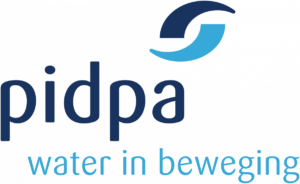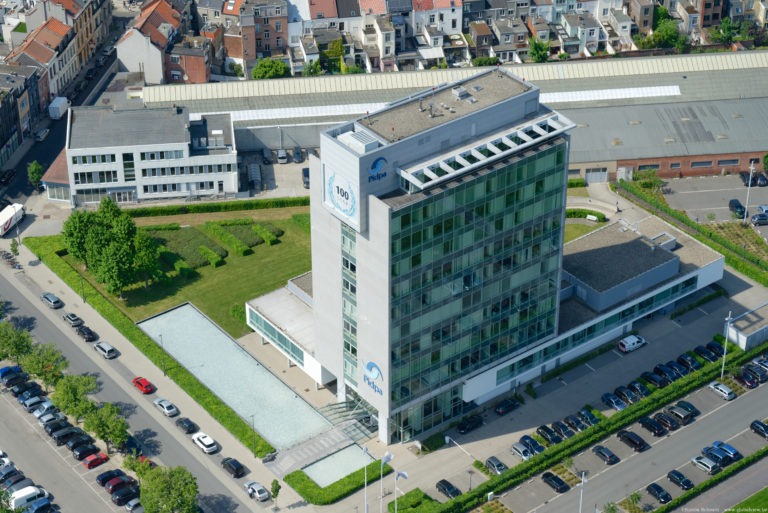
Who is Pidpa?
Pidpa is a producer and supplier of pure drinkable water within the province of Antwerp, with a view on sustainability. For this they have 11 water production centers, 59 water towers and 27 booster stations. All this accumulates to 175 million liters of water every day.
- Approximately 700 employees
- Provides around 500,000 customers or 1.2 million inhabitants of drinking water in the Belgian province of Antwerp
- Extensive sewerage activity
- Pipeline of approximately 12,700 km
- IT service support of 30 employees
Integrations at Pidpa
To have water flowing from the taps of 1.2 million people every day, a lot of infrastructure is needed. The day-to-day management of this infrastructure therefore requires cooperation between municipalities, contractors, consultancy firms, etc. All information about their projects and activities can be found in their ERP system SAP S/4 HANA. However, making this data accessible to our partners turned out to be a major challenge.
We noticed the need to do more integrations, but on the other hand we noticed that those integrations were very labor-intensive as a lot of coding was involved. After all, collaboration via mailbox is outdated.
We were looking for a modern way to efficiently link the dataflows between all parties. Ometa showed how their digital collaboration portals have led to enormous efficiency gains at other water companies. Thanks to the Ometa framework, effective coding has shifted to configuring the integrations. This has the great advantage of saving time and you can standardize several things.
“Communication with all our stakeholders and the digitization of all meters in our extraction area were major challenges for us. This is a project that will ensure a very large rollout until 2030.” says Stefan Meys, Director of Finance, ICT & Purchasing.
SAP S/4 HANA
In concrete terms, Ometa has ensured that the right information reaches the right parties at the right time in a secure context. The ERP system is always central to this. For example, our customers can consult the rates via the website, these differ per municipality and are automatically updated from our SAP system.
During the production process, employees have access to a digital workplace in which relevant information from various sources such as the SAP system can be seen, and they can also immediately make the necessary adjustments.
We have rolled out the same concept for collaboration with external contractors. Via such a digital workplace they gain access to, for example, work orders from the SAP system, so that they can process them and consult all relevant documents. This means that there is one clear communication channel.

A stable DIY integration tool
When it comes to technical choices, Pidpa always strives to make stable decisions for a long-term solution. That is why the IT department finds it very important to make informed choices. In this context, being able to start small to see if the expectations are actually fulfilled plays an important role. While experimenting with a new technology, it is also important for Pidpa to have close contact with the technology supplier. After all, it is not just about what the software can do, but also about how the relationship with the provider is. This is how Pidpa started a trial license. Also in terms of investment, it was important to be able to start small and then grow. This way, the management could be convinced systematically.
Pidpa strives to realize 80% independently with the Ometa framework. This gives them freedom of choice and it enables them to change things quickly and flexibly. For complex issues they can of course rely on the support and expertise of Ometa. Thanks to the Ometa framework, Pidpa found a stable solution that meets their needs. They found a simple way to integrate with SAP, eDOCS and AD. Ometa also offers various other integration options thanks to the built-in OData service. This offers them a uniform working method, which is a great advantage.
In addition, the tool is easy to use because it is only a matter of configuration. As a result, for some solutions the development time is reduced from weeks to days. Finally, Pidpa now has a tool that they can manage and use independently. This gives them a lot of freedom and flexibility to change or adjust their portals and solutions.

Improved internal communication
With around 700 employees, Pidpa has the constant need to optimize communication. For example, a few years ago the water company made the intranet much more dynamic and ensured that the quality and speed of information was increased. Initially, there was a huge amount of e-mail traffic within the organization, including e-mails to large groups of people. That is why Pidpa decided to make news reports and internal information such as emergency messages and announcements available via an integrated intranet. Through the new intranet, employees can make holiday requests and sickness notifications and these actions immediately pushed towards the colleagues of HR.
Thanks to the direct integration with SAP, an efficient way to follow up on all kinds of requests became possible and different actions are now managed in a uniform manner. The intranet is accessible to all employees. For the workers who are always on the road, the intranet is made available on tablets. This last example is closely related to the fact that Pidpa has a diverse staff park. This means that there are employees who are very familiar with SAP, but at the same time there are also many employees who have no experience with the system. For the latter group, the integrated intranet means that they can receive information from and can write back to SAP in realtime via user-friendly SharePoint portals.
A very striking example is the registration of deviations in SAP. Deviations can be seen as defects or malfunctions (e.g. to a sewer system). Previously, it often occurred that employees had no access and / or knowledge of SAP. Consequently, a manual data transfer was necessary with the additional disadvantage that the data was not always up to date. This has been solved because employees can now register and update deviations in SAP via simple web forms.
Future vision
After Pidpa made the switch to SAP S/4 HANA, they are also looking at which other systems they want to bring to the cloud. Tom Van Eysendeyk, Manager Applications Customer & Front End: “We notice that our focus is increasingly on cloud transition. This cloud transition can certainly be supported by the Ometa framework. Ometa has demonstrated to other customers that the platform is ready for this strategic shift.”

